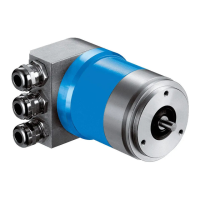Introduction
16 ATM60 / ATM90 / KHK53
Dec 2021
Comprehensive overview of the basic functions:
Technology
• Detailed description
Bus access
• Token Passing procedure between masters and master-slave
procedure for slaves.
• Mono-master or multi-master systems are possible.
• Master and slave devices, max. 126 stations on a bus.
Communication
• Peer-to-peer (user data traffic) or multicast through Global Con-
trol Commands (GCC).
• Cyclical master-slave user data transmission
Operations conditions
• Operate: cyclical transmission of input/output data.
• Clear: inputs are read, outputs remain in a failsafe status.
• Stop: no transmission of user data.
Synchronisation
• Global control commands enable the synchronisation of inputs
and outputs.
• Sync Mode: outputs are synchronised.
• Freeze Mode: inputs are synchronised.
Functionality
• Cyclical user data traffic between master(s) and slave(s).
• Dynamic activation/deactivation of individual slaves, testing the
slave configuration.
• Diagnostic functions (3 hierarchical levels).
• Synchronisation of inputs and/or outputs.
• Address assignment for slaves over the bus.
• Maximum possible 246 bytes of input/output per slave.
Safety functions
• Message transmission with Hamming distance HD = 4.
• Watchdog timer of the DP slave detects errors of the master al-
located.
• Access protection for the inputs/outputs of the slaves.
• Monitoring of user data traffic using an adjustable monitoring
timer for the master.
Device types
• Class 1 DP Master (DPM1): central programmable controllers
such as PLCs or PCs.
• Class 2 DP Master (DPM2): developmental or diagnostic tools.
• DP Slave: device with binary or analogue inputs/outputs.
4.3 Physical Profibus Network Link
4.3.1 Network Topology
The cabling and some specific features such as bus termination, are shown.

